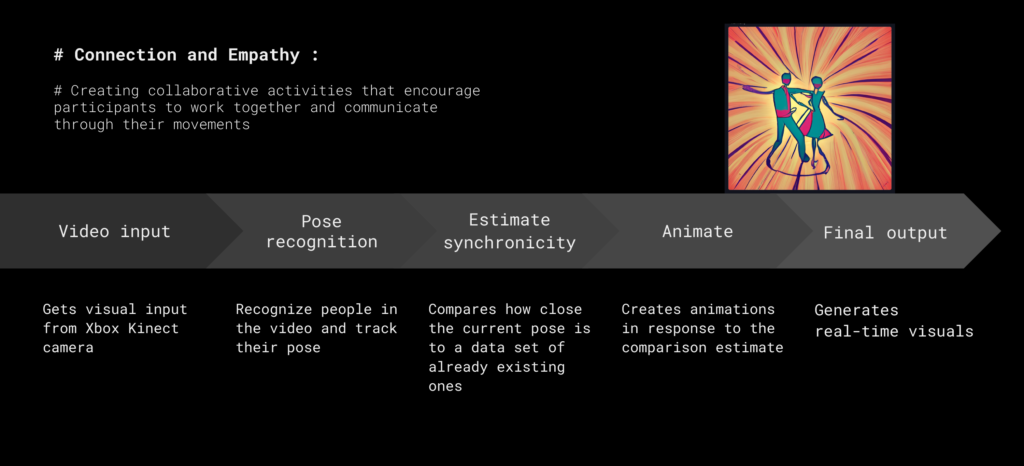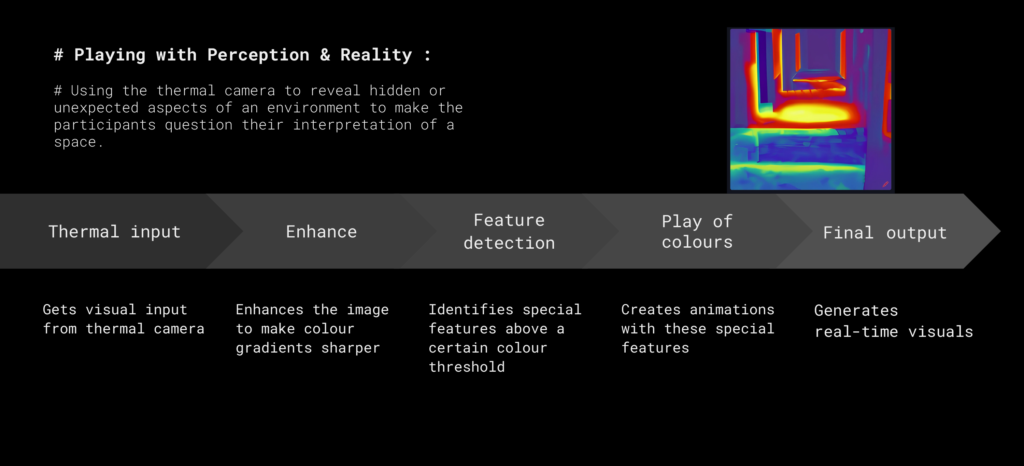An interactive art installation that utilizes thermal imaging and real-time animation to create a captivating visual experience.
The general aim of the project “Thermal Rhythm” was to generate an interactive art-wall in complete darkness which translates the human body movements into animations that controls or visualizes the emotions of the detected person through different colors and visualizations.

In order to achieve that interactive design idea different software and hardware tools were explored. The exploration of cameras and setups were the first steps of sensing in combination with the exploration of software to detect human bodies from them created 2D images. As cameras mainly the “Microsoft Kinect Xbox360” and the “Pure Thermal 2 camera” have been investigated. Those images have been post-processed for preliminary studies in “OpenCV”. The advantage of both cameras is that ranges in values can be easily extracted. Generally talking only people in the set range would be detected. That is either a predefined distance range with the “Depth-camera” (Kinect) or a certain chosen temperature value of human bodies with the “Pure Thermal 2” to differentiate them from there surrounding.
For post-processing image data to extract detected bodies and create sensitive visualization, different software tools have been investigated. Such as “OpenCV”, “Processing”, “Open Frameworks” and “Touch Designer”. The advantage of “Open Frameworks” and “Touch Designer” would be that both are visualization tools and have the “OpenCV” library included however with the difference that the first is a “C++” coding environment and the second is a “GUI-coding” (graphical user interface).
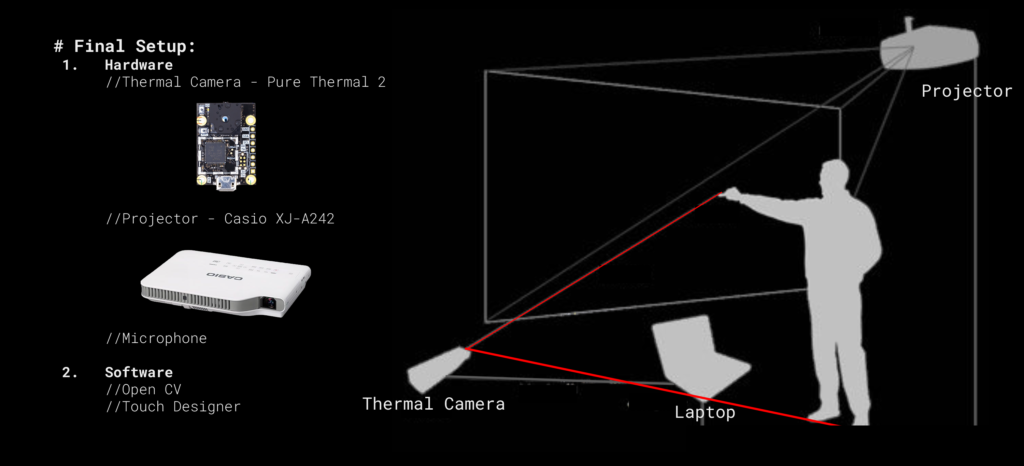
For the final setup “Thermal Rhythm” uses the Thermal-camera for visual sensing because by entering the interactive field human bodies can still be detected even as the installation is in complete darkness and therefore no accessible light for conventional cameras. As Software we finally use “Touch Designer” since it can read directly intern the input of the “thermal-camera”, include the OpenCV library and mainly manage or create any kind of data and visualizations in real-time connected to an projector.
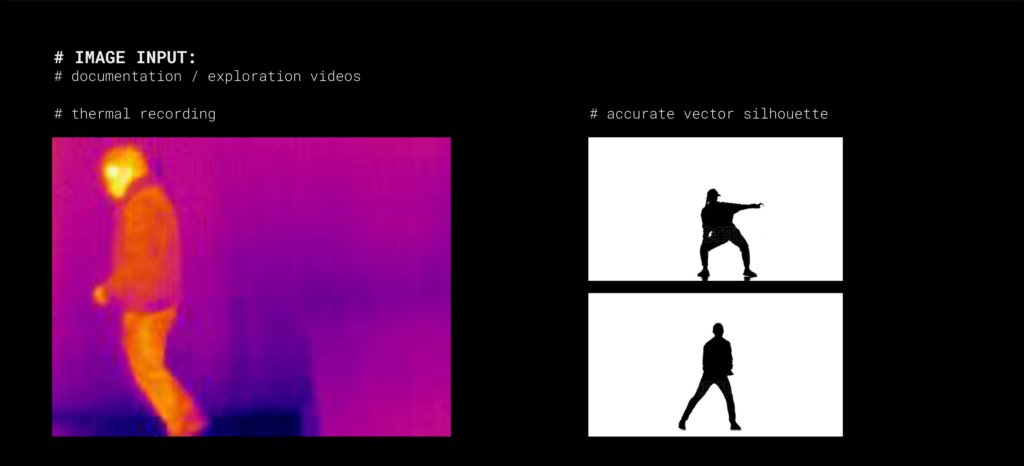
For the documentation of the explored visualization those two categories of input videos are used. One is a accurate vector silhouette video which was helpful to develop animations because it wasn’t needed to deal with the camera setup and settings. The second input video is a actual thermal video to prove that the visualization would work on real-life application.
DESIGN and WORKFLOW
In the following some visualization designs and there workflow are shown.

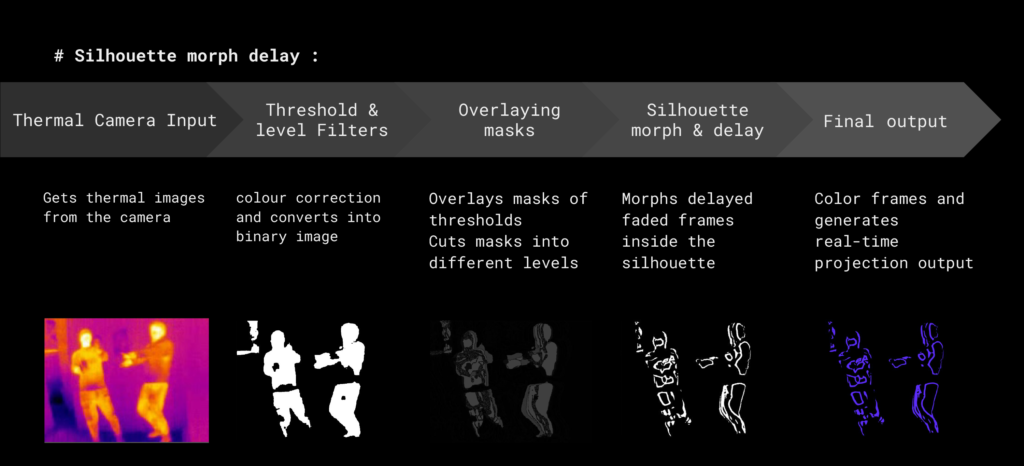
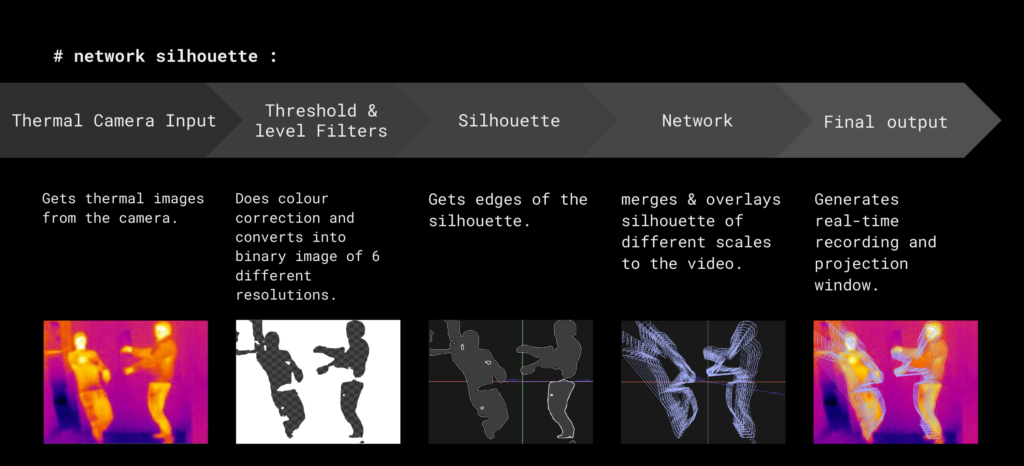

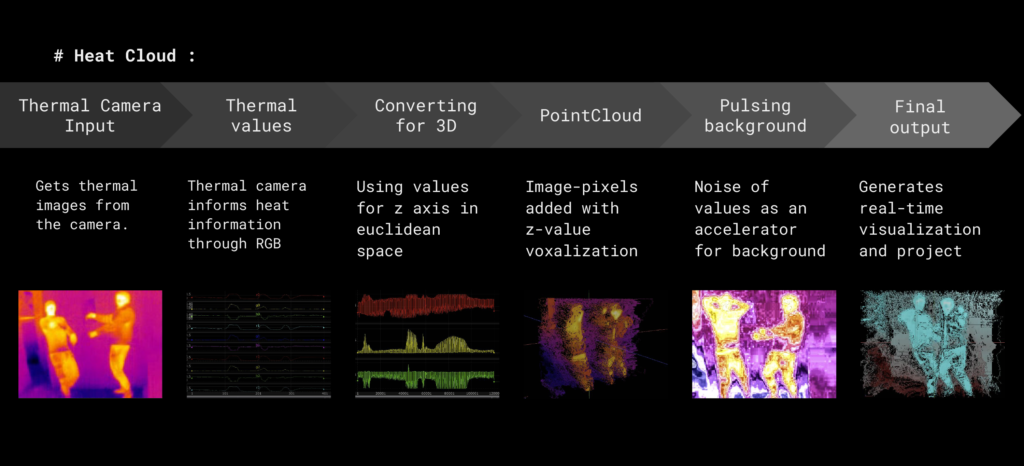
FUTURE APPLICATION

